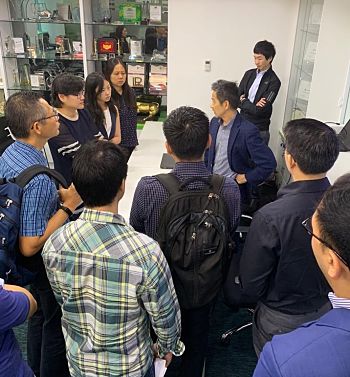 Wong Teek Son, executive chairman and CEO of Riverstone Holdings. Wong Teek Son, executive chairman and CEO of Riverstone Holdings. Photo by Leong Chan TeikIn 3Q18, Riverstone Holdings experienced a rare occurrence - a jump in revenue that was accompanied by a decline in both gross profit margin (from 27.1% to 19.3%) and net profit. Sharply higher raw material costs and a labour shortage were the key reasons, said executive chairman Wong Teek Son.
Investors didn't seem perturbed: Singapore-listed Riverstone's share price has held steady, closing at $1.18 last Friday and hovering close to its near-3 year high of $1.23. The trailing PE of 20X is something shareholders cannot complain about. |
|
Stock price |
S$1.18 |
|
52-week range |
96 c – $1.24 |
|
PE (ttm) |
20.5 |
|
Market cap |
S$875 m |
|
Shares outstanding |
741 m |
|
Dividend |
2.0% |
|
1-year return |
15% |
|
Source: Bloomberg |
|
Shedding more light on the challenges in 3Q18, Mr Wong said:
♦ Raw material costs rose, due to a shortage. The hike was 40% y-o-y (up ~US$400/tonne), resulting in a 12% rise in the cost of production for its healthcare gloves.
Most of the cost increase was absorbed by Malaysian-based Riverstone, instead of being passed on to its customers, in view of the stiff competition among similar producers.
"This had the most serious impact on our gross profit," said Mr Wong.
These cost increases -- mainly of the raw material, butadiene -- similarly affected cleanroom gloves. There's short-term pain as typically, Riverstone negotiates prices with customers of its cleanroom gloves on a quarterly basis.
 Investors with Mr Wong Teek Son after the 3Q18 results briefing. Photo by Kamal Samuel.♦ Labour shortage, resulted in payments for overtime work. This added 10% to the labour cost, or RM1 million.
Investors with Mr Wong Teek Son after the 3Q18 results briefing. Photo by Kamal Samuel.♦ Labour shortage, resulted in payments for overtime work. This added 10% to the labour cost, or RM1 million.
♦ Sales mix shifted: The revenue jump in 3Q was attributed mainly to healthcare gloves, resulting in the company's product mix being 83:17 (healthcare gloves versus cleanroom gloves), instead of 80:20.
Cleanroom gloves, because of their far superior margins, contributed over half of Riverstone’s net profit.
In 4Q: Raw material prices have softened -- by over US$100/tonne since Sept, according to Mr Wong.
And Riverstone has hired about 200 new foreign workers for its new plant.
Furthermore, the USD, the currency Riverstone sells in, has strengthened slightly, translating into more ringgit for the company.
"Overall, competition in the healthcare segment is tough because of new production capacity. But, thanks to support from customers, our new plant capacity is taken up until January."
Riverstone's Phase 5 expansion will increase its total annual production capacity to 9 billion gloves by end-18. Construction of Phase 6 has started and will add another 1.4 billion glove capacity, lifting the group's total annual capacity to to 10.4 billion. |





